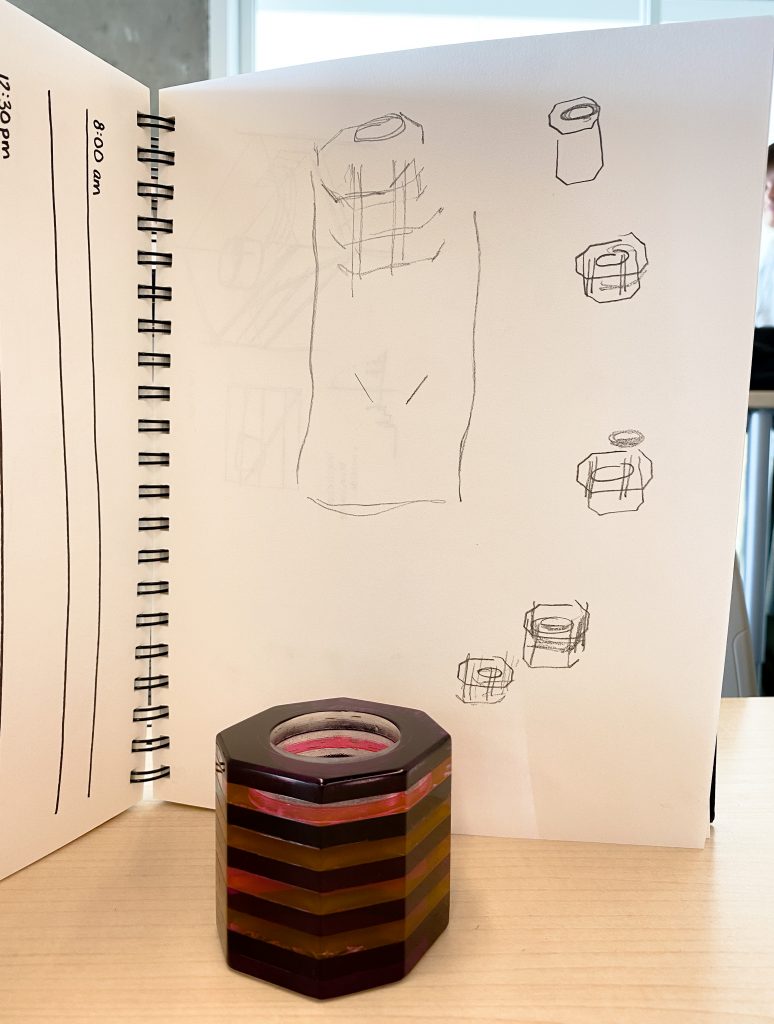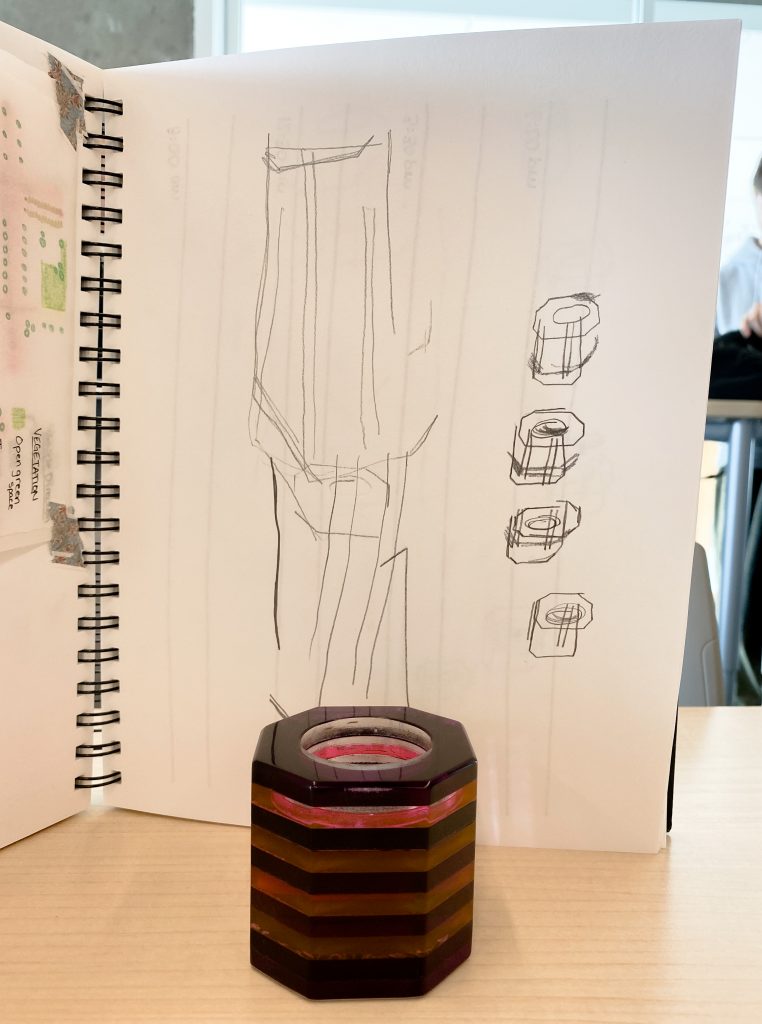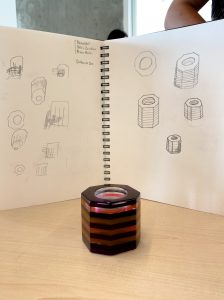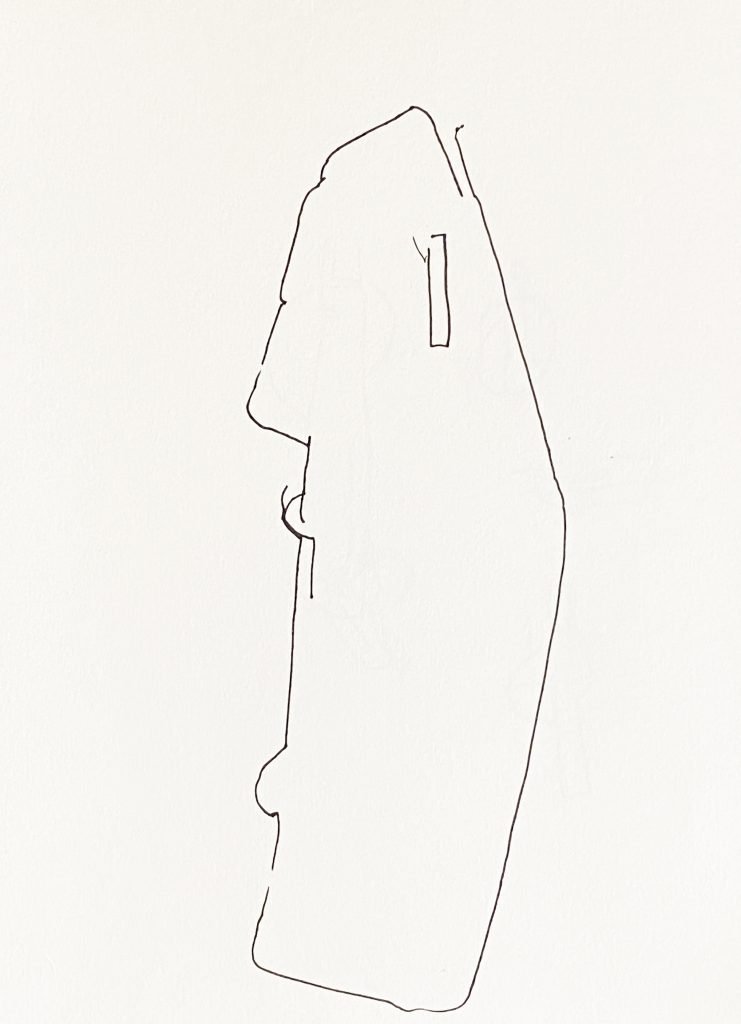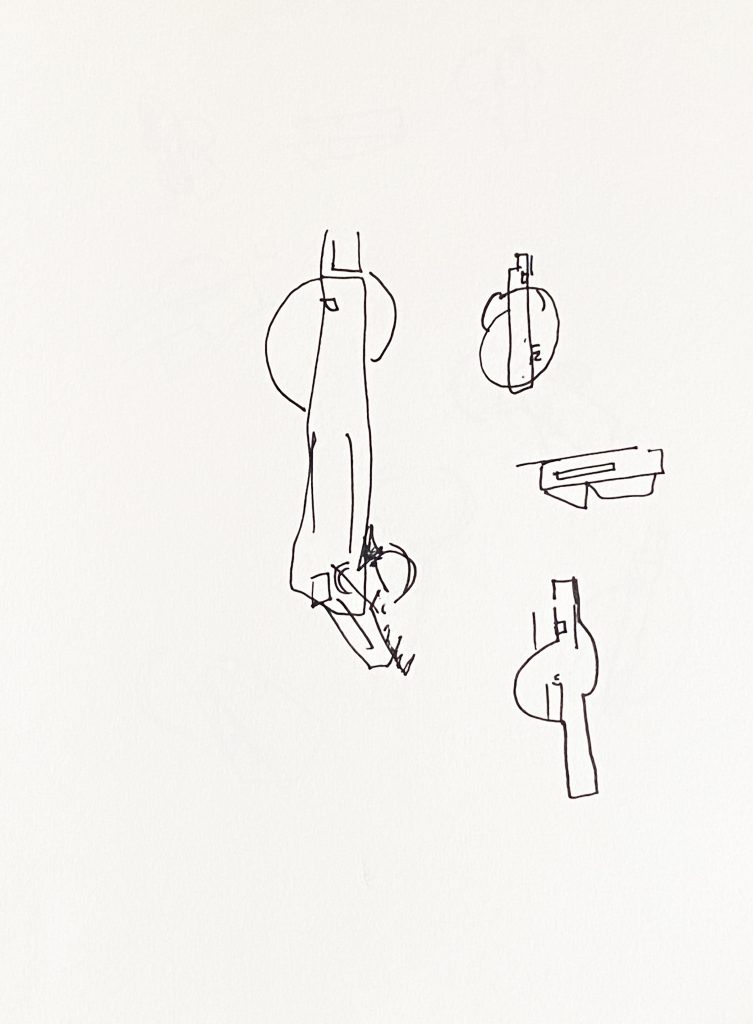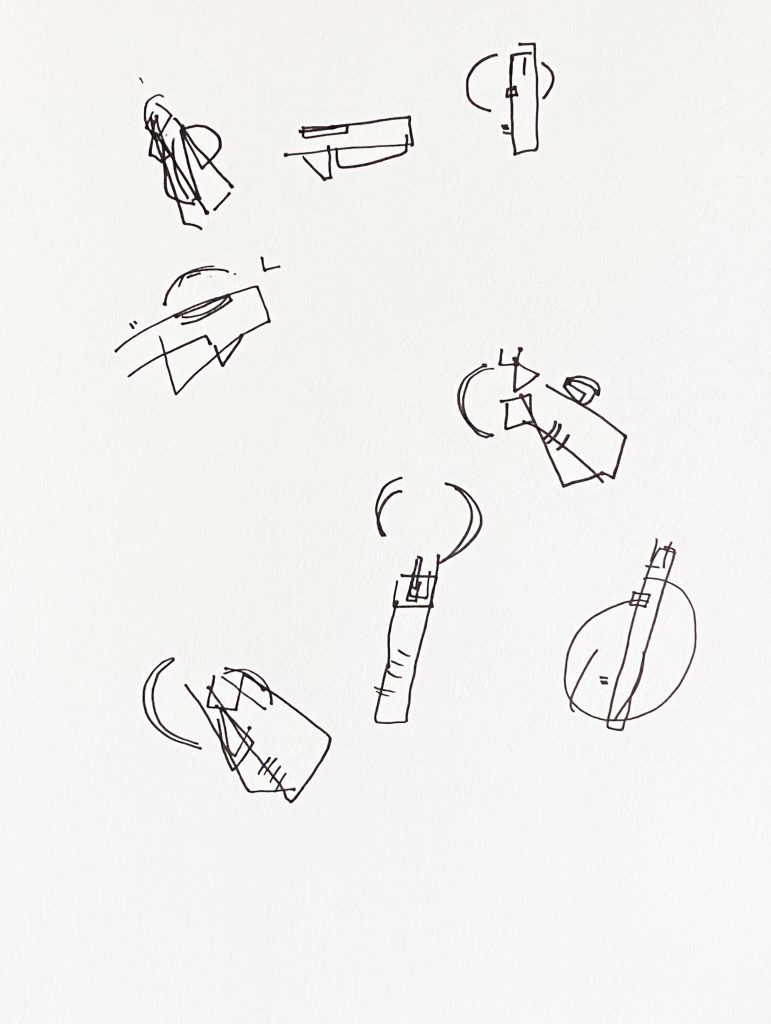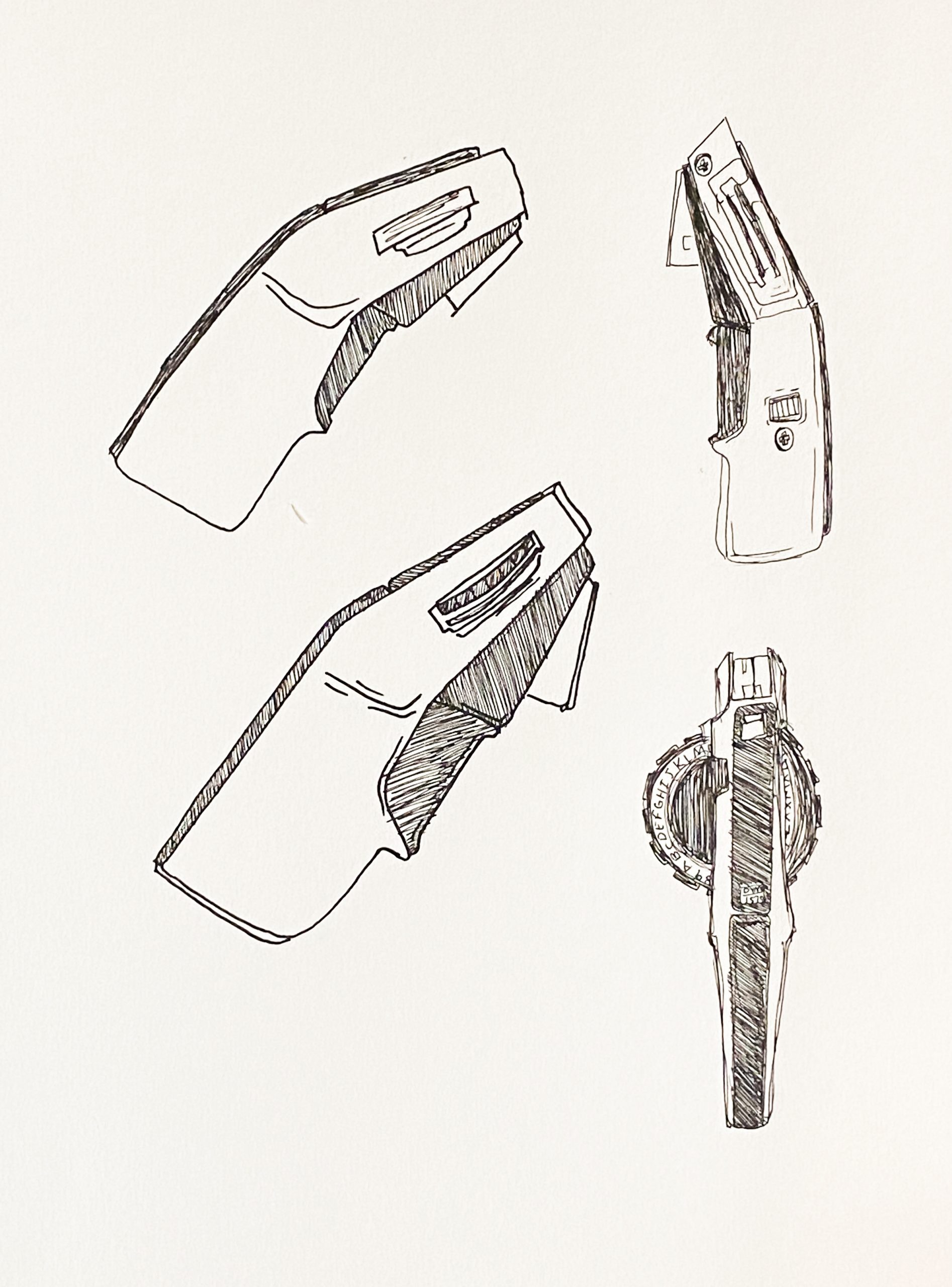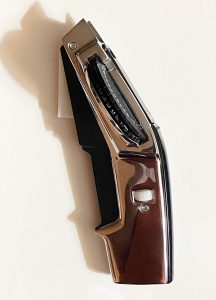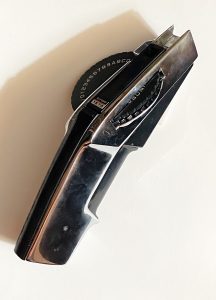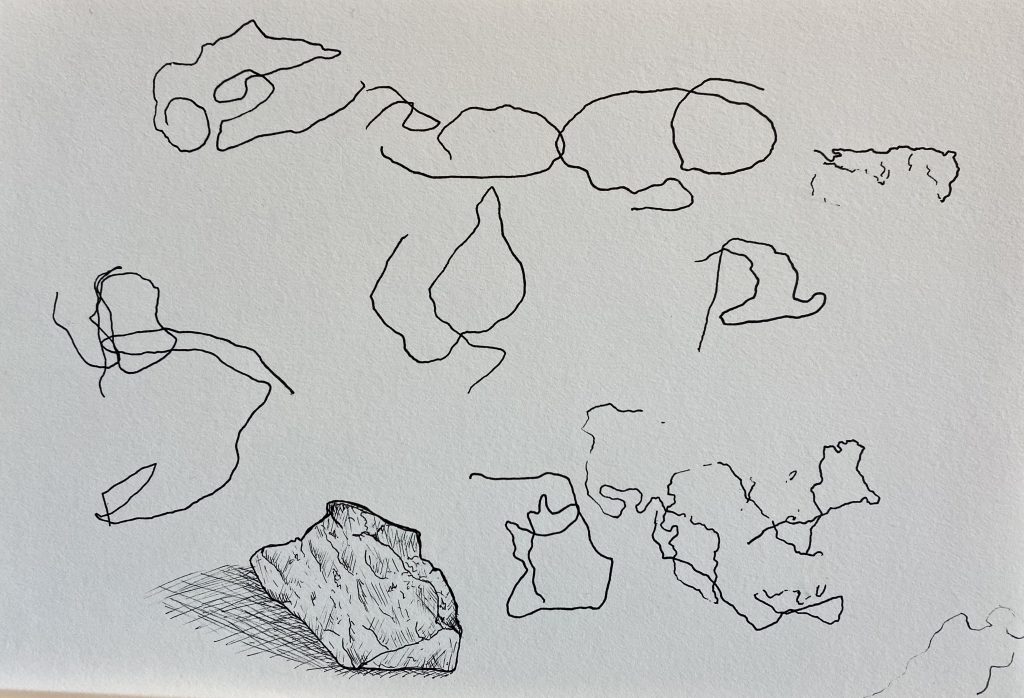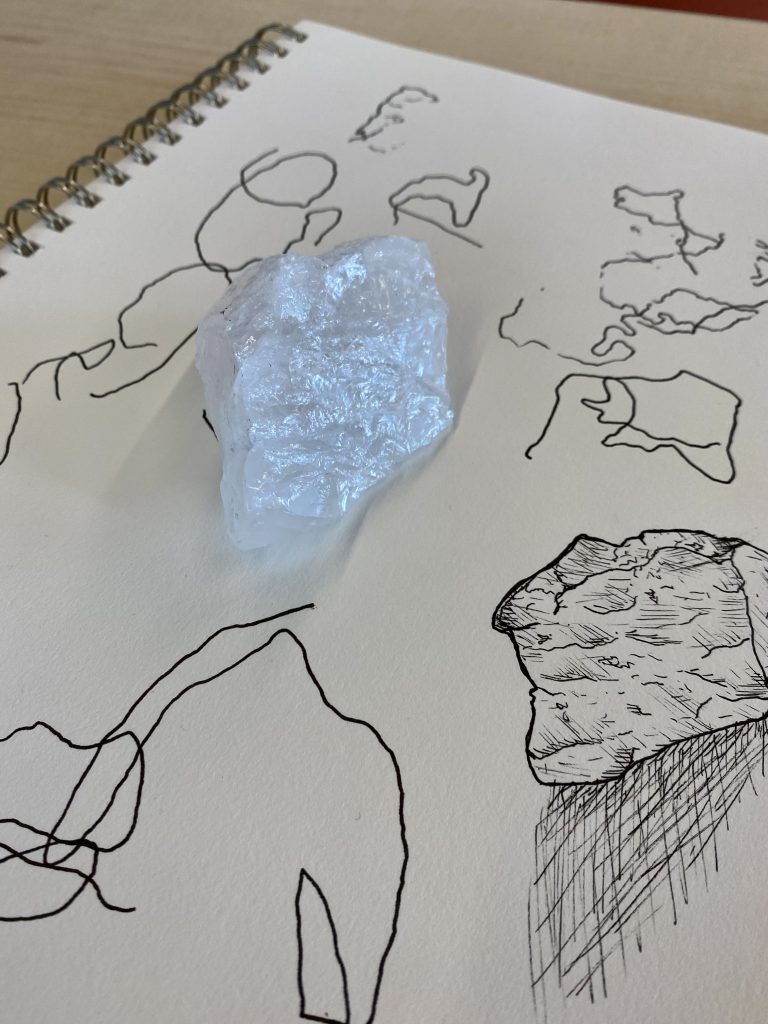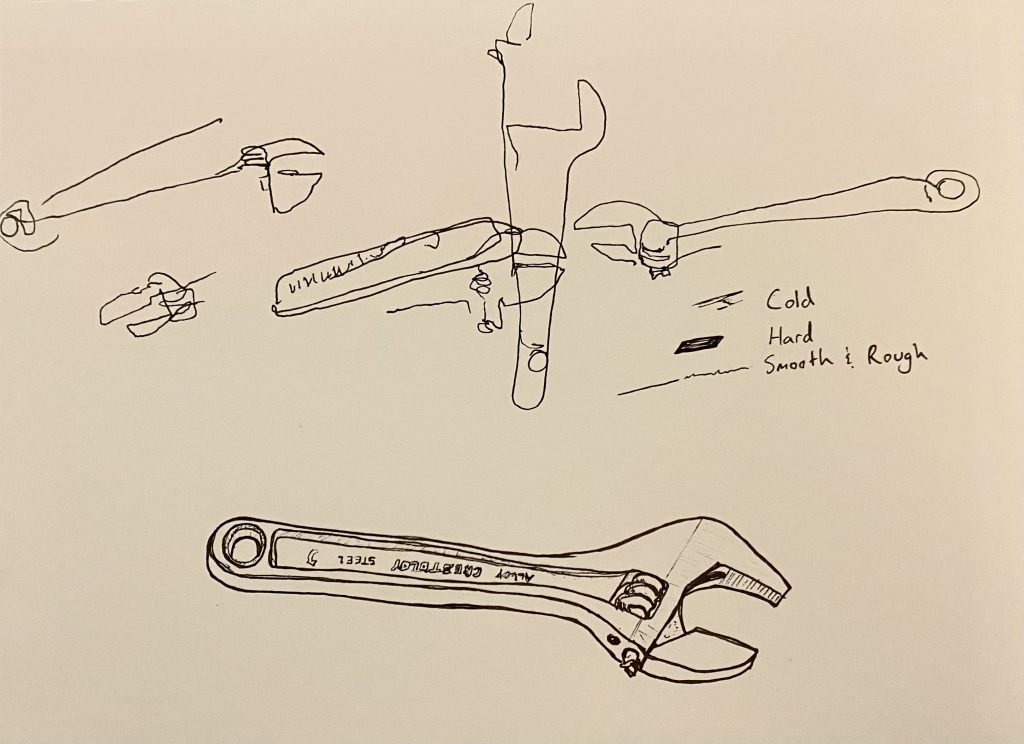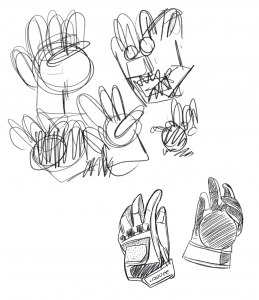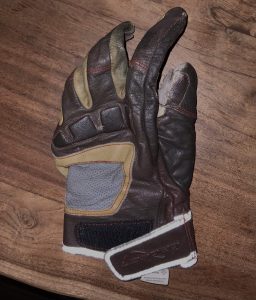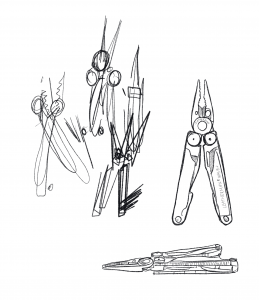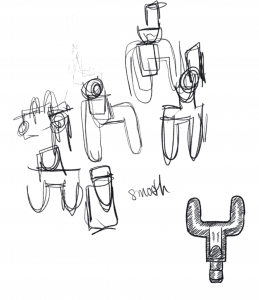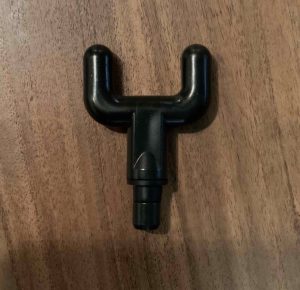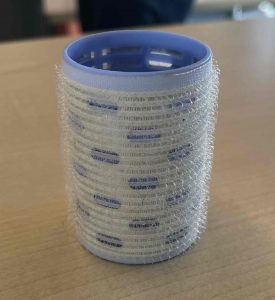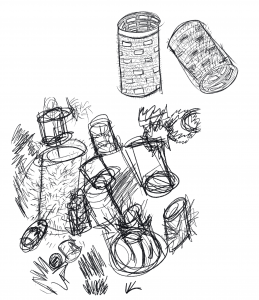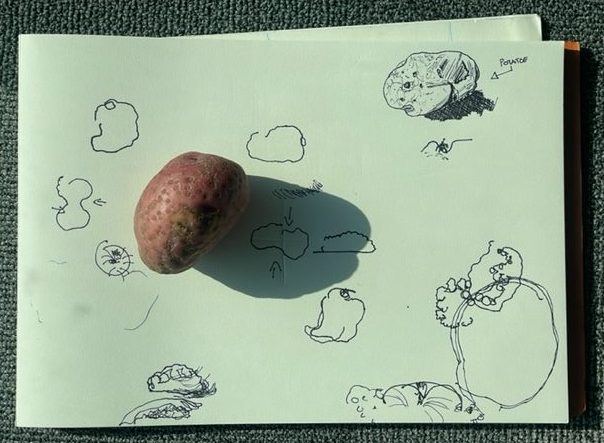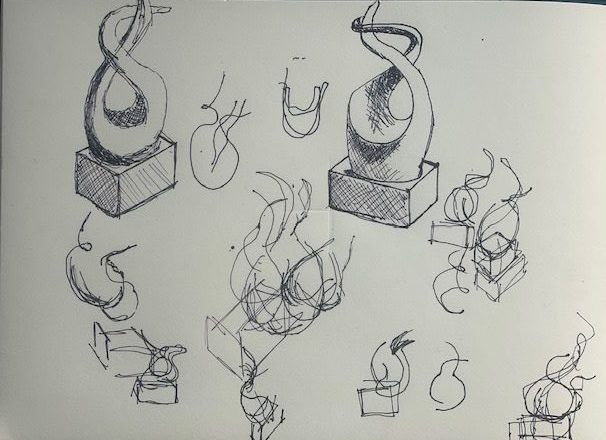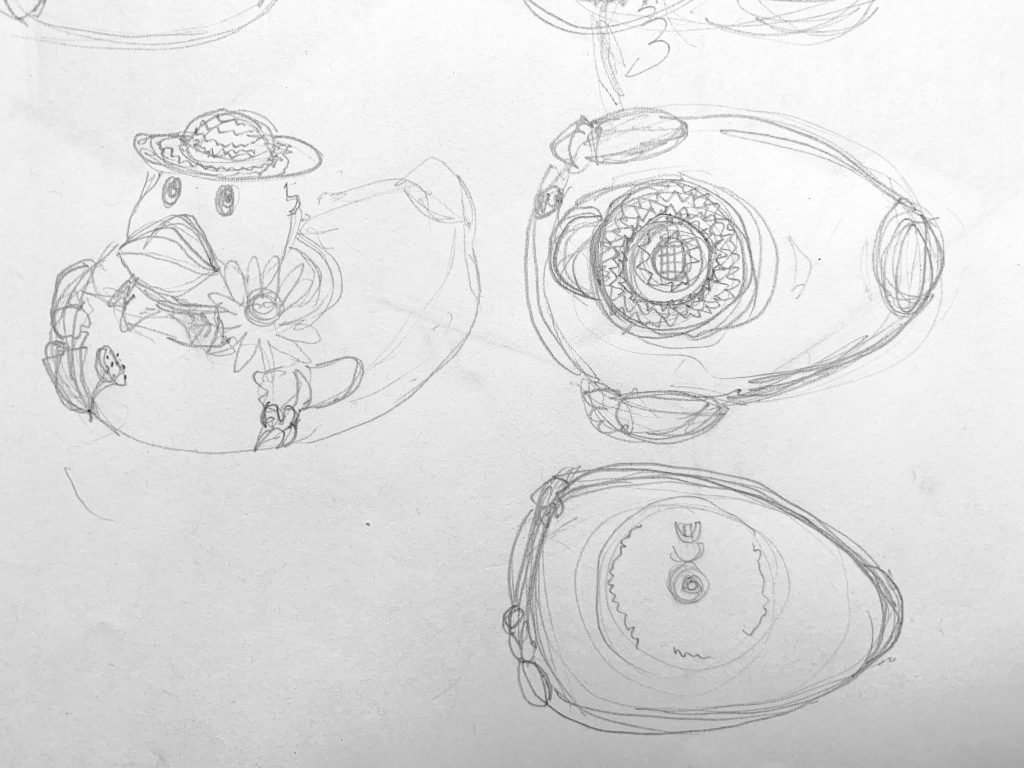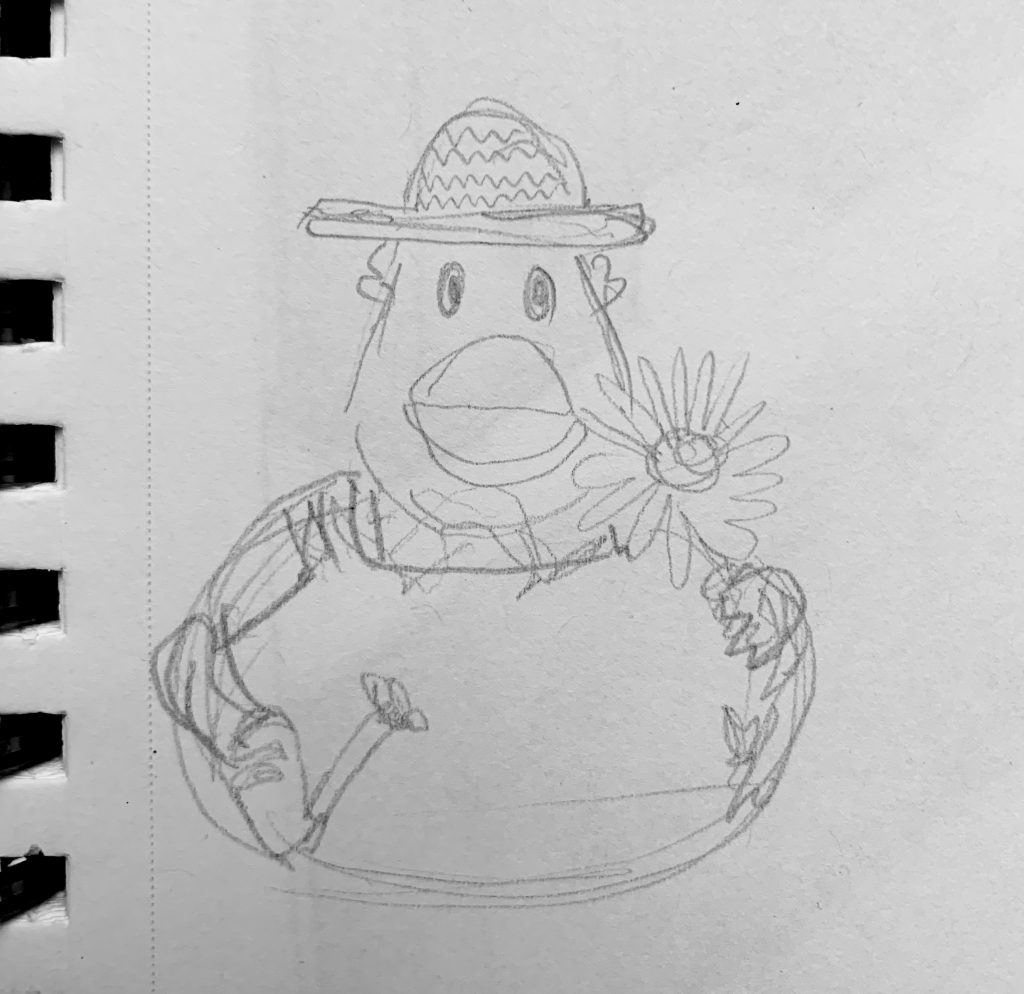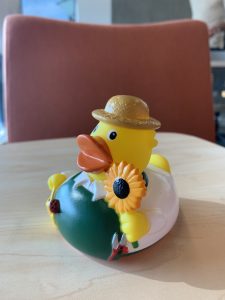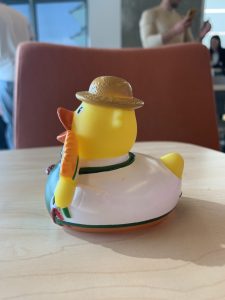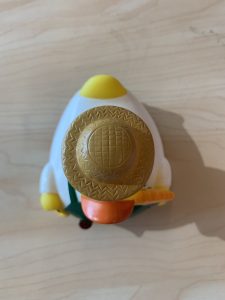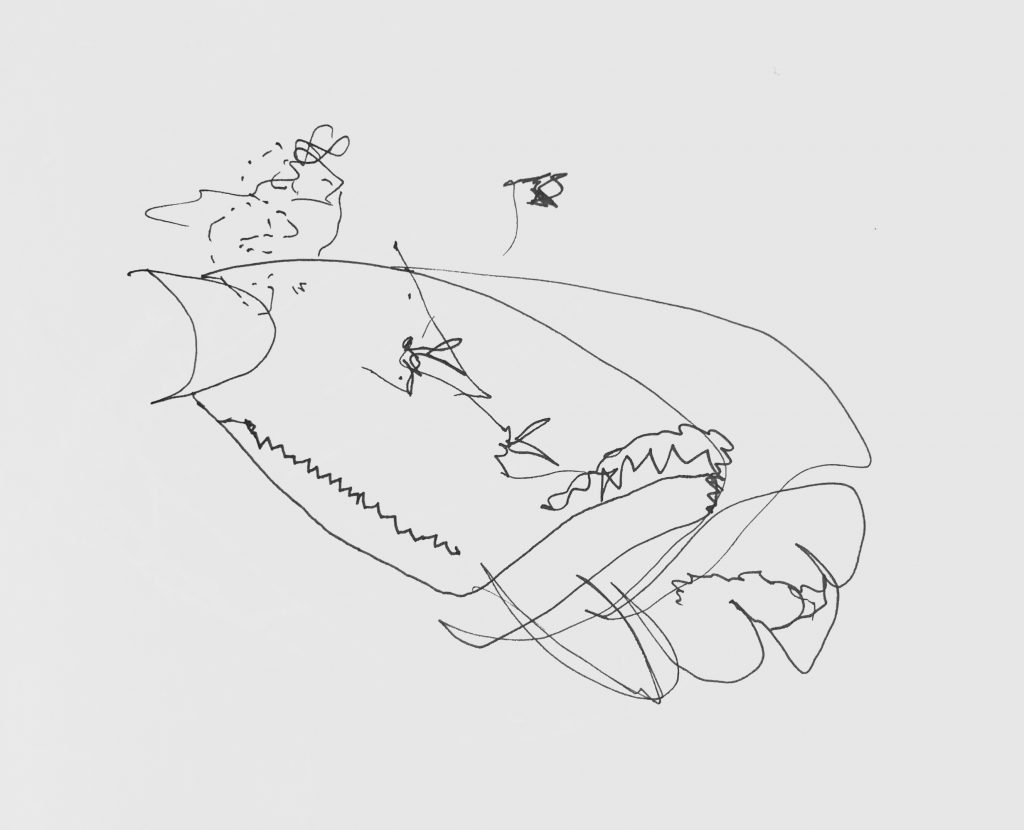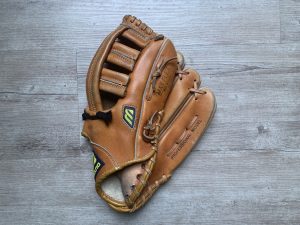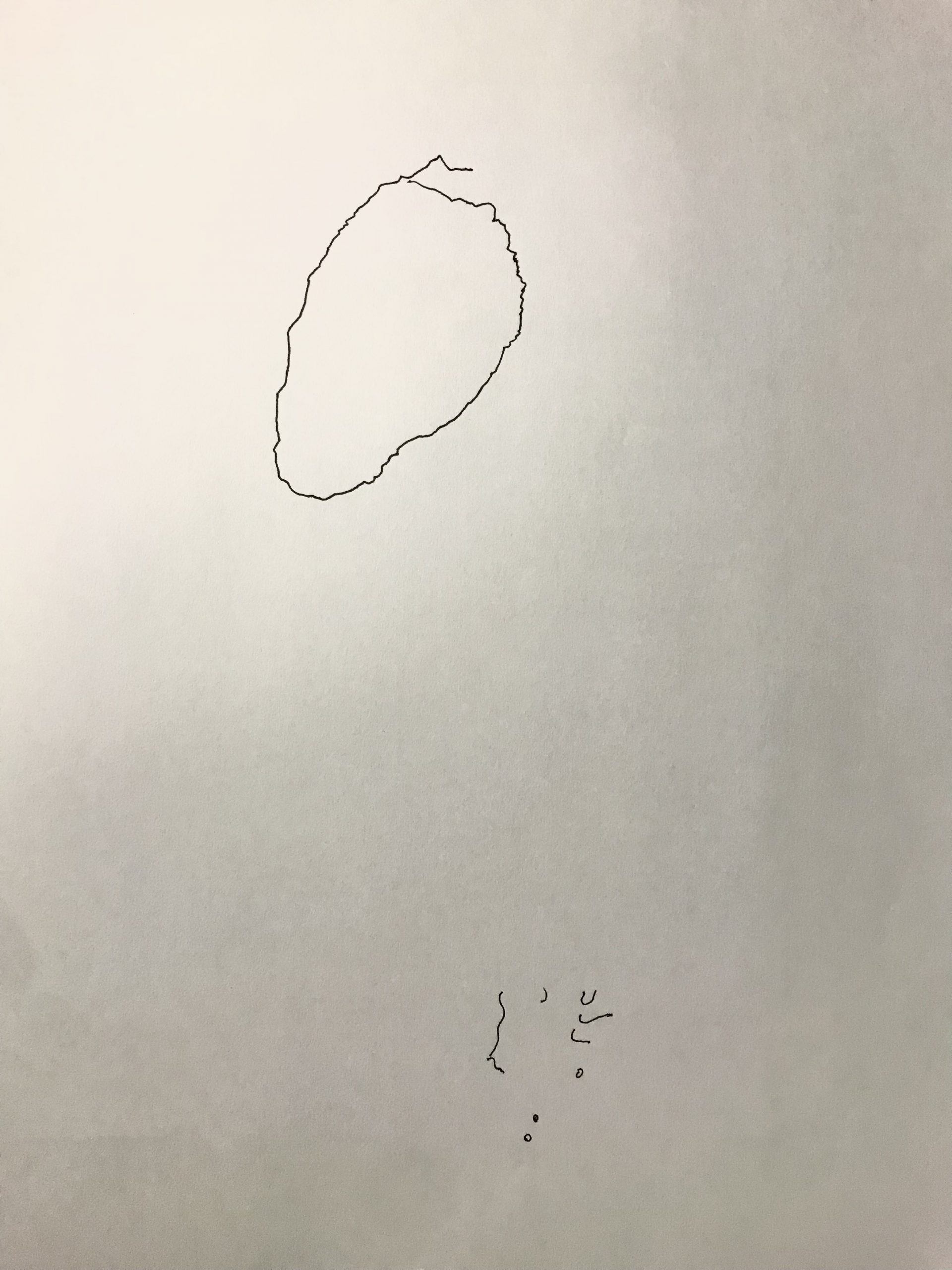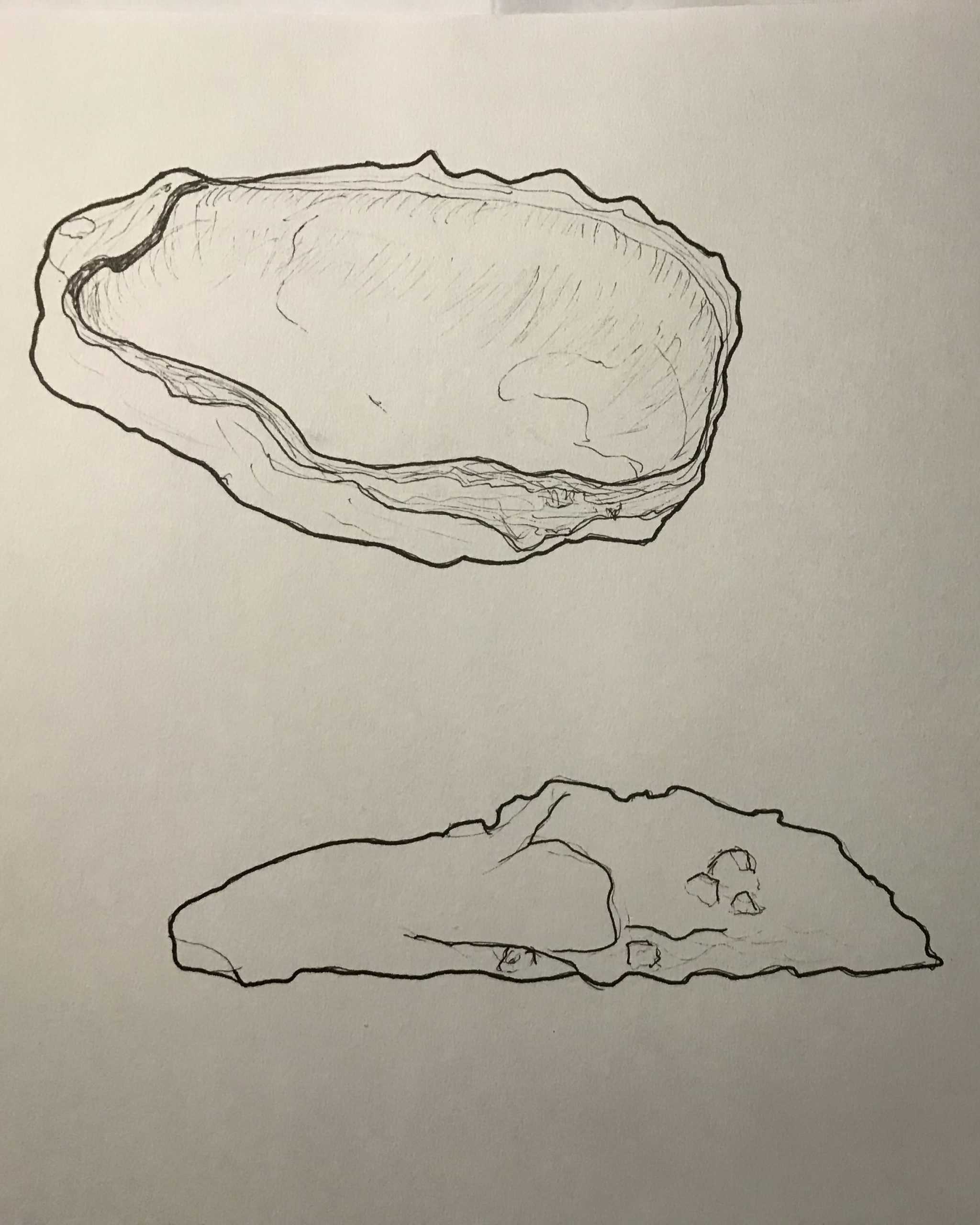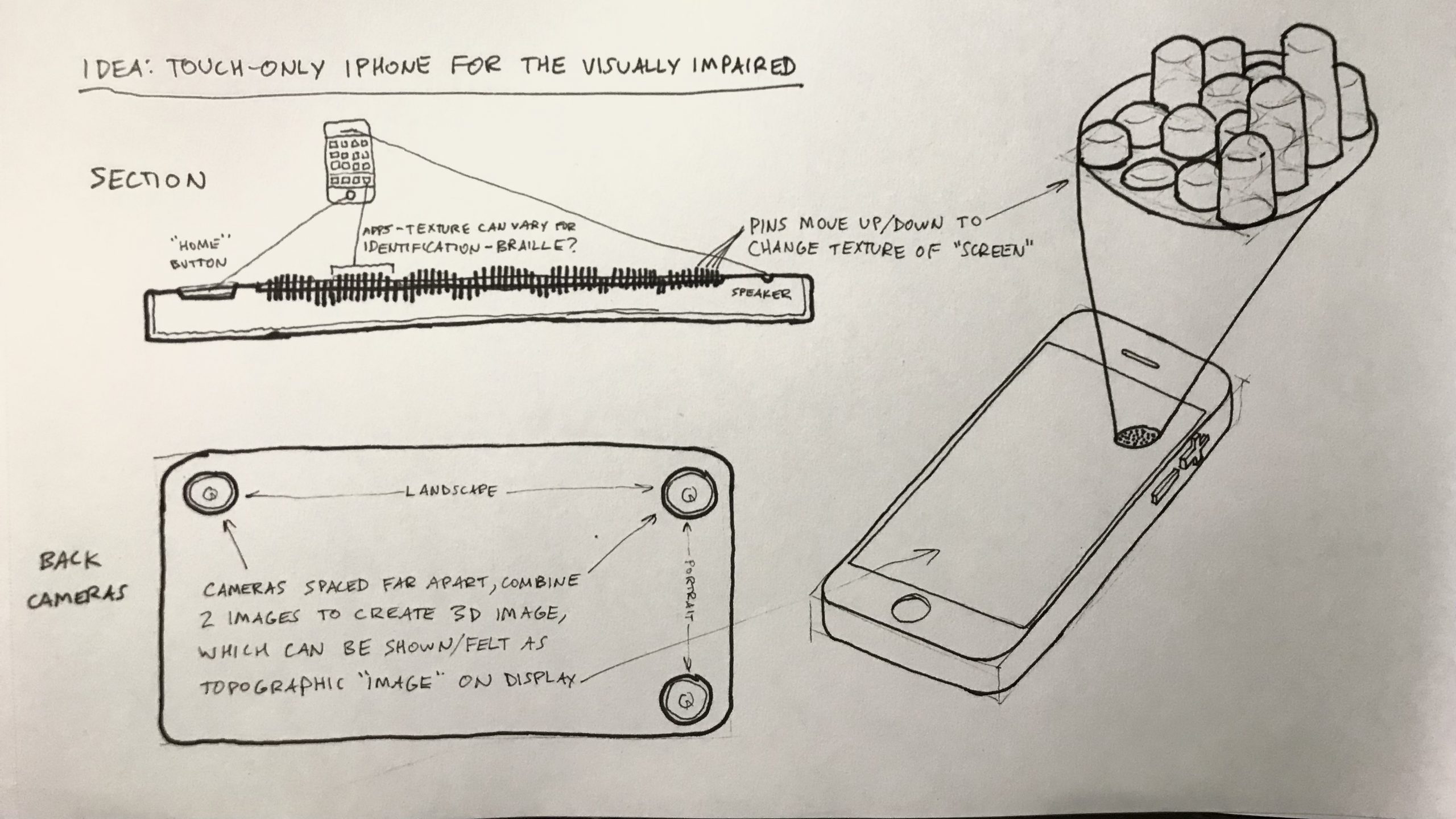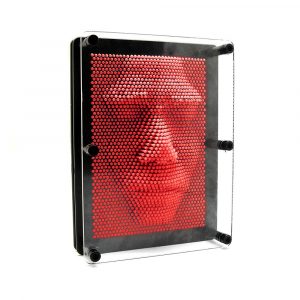IN CLASS
Blindfolded sketching – object was smooth, octagonal and when holding it I noticed that there was an indented space just large enough for a tea candle. While I drew, I noticed that while I had an understanding of what the object likely looked like, I found it hard to keep track of where my pencil was on the paper. Because it was a symmetrical object though, this task wasn’t as difficult for me as I believe it was for others with more intricate or oddly shaped objects.
The fourth drawing was created without the blindfold on and able to see the object. I noticed that I felt required to be accurate and was far less loose with my drawings. For example, I noticed that I kept getting frustrated that I was making it taller than it actually was.
The object with my drawings.
AT HOME
I tasked my partner with finding an object for me to blindfold draw, which turned out to be harder than expected. We’ve lived together for a few years so finding an object that is new to me is hard. In the end, I did know what the object was but it had been boxed up for a few years so I couldn’t remember any of the details at all. It was also much larger than the candle holder which made it far more difficult to get an understanding of the geometry of the object.
The object was a label maker made of metal and plastic. I could generally feel where grooves and indents were as well as the change of material, but I realized once I took off the blindfold that there were many more details that I somehow missed.





